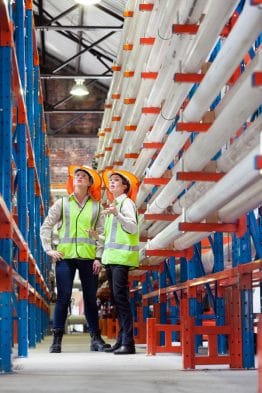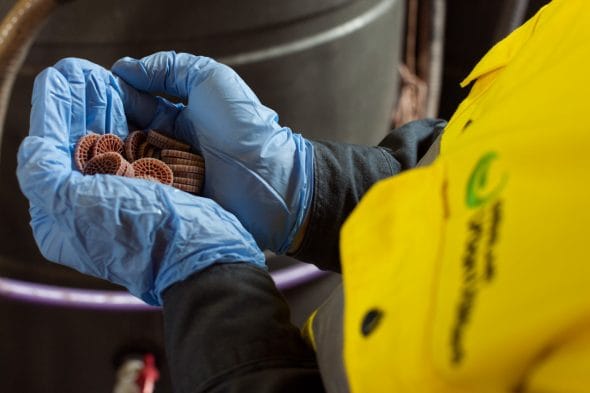Modelling the science of sewers: a way forward for urban water planners

Queensland Urban Utilities’ Innovation Centre
Out of sight, out of mind. The saying has rarely been truer than when applied to an easily overlooked necessity of healthy urban communities – a reliable, safe system for managing wastewater. But in a world of population growth and increasingly scarce freshwater, what happens when our sewerage systems face new challenges?
In Australia and worldwide, that’s exactly the problem confronting water managers and industry. To meet the challenge of dwindling water supplies, cities are increasingly implementing admirable water saving strategies: decentralised schemes like local greywater reuse, rainwater harvesting, and even wastewater recycling, which crucially relieve pressure placed on drinking water and groundwater catchments.
But there’s a big catch to the water savings. In decentralising some of our water supply, and diverting water that would otherwise enter sewers, we are changing the nature of the wastewater we produce.
Through the CRC for Water Sensitive Cities (CRCWSC)’s “Managing interactions between decentralised and centralised water systems” (Project C3.1), University of Queensland researchers are providing solutions to the technical challenges posed by this new “wastewater norm”. The team’s novel, award-winning research on the biological mechanisms of sewer odour and corrosion – and strategies for dealing with the problems – have already been widely adopted by Australia’s water industry.
Now, Dr Keshab Sharma and his colleagues are channelling the “science of sewers” into making their findings even more directly applicable for water managers, with huge implications for the cost of maintaining water assets. “We want to assess the interactions between decentralised and centralised systems, to understand the best ways to manage how changes in one component impact the others.”
A case in point? The fact that decentralising water sources sends less water flowing into sewers. Keshab explains why this is such a problem. “In areas with decentralised systems, we see two outcomes: more concentrated wastewater, and reduced rate of its flow,” he says. Although the sewer systems can cope with the changed conditions, there are serious consequences. Organic waste sits in sewers longer, and at concentrations that intensify microbial activity to simultaneously increase greenhouse emissions, amplify odour problems, and hasten corrosion of concrete pipes.
Zane Tomlins, Process Control Efficiency Manager at Queensland Urban Utilities (QUU; industry collaborator on the work), highlights that while odour is an issue that must be addressed, the underlying corrosion that it signifies is the bigger financial concern.
“For water utilities, if a pipeline lasts 30 years instead of 100 years, then that’s a huge difference for the hip pocket,” he says. For a network worth billions in infrastructure already in the ground, this has potentially dramatic ramifications.
And while a new wastewater norm will only become more common in the future, Zane emphasises the immediate need for better integrating decentralised technologies into an overall system quite literally underpinned by existing, centralised sewerage systems.
“With recent droughts, we’ve seen the shift in flow happening already," says Zane. "In 2007 in south-east Queensland, water use per person per day went from over 300 L, down to 140 L, reducing the flow into sewers by 50%. Since then people have changed their water use behaviours, with flows remaining around 170–180 L/person. But the number of people producing waste is of course the same, so the concentration increases.”
Indeed, the implications for how we transport wastewater are little investigated, and yet could bear some of the biggest infrastructure costs in increasingly water sensitive scenarios. In this respect, Zane describes the researchers’ work as “groundbreaking in unpacking the components.”

Annamox bugs at the Innovation Centre
That component-level thinking is aptly mirrored on a technological level, in experiments run at Brisbane’s world-class Innovation Centre: a site hosting ideas central to the CRCWSC’s objectives. Run by QUU and underpinned by a collaborative research agreement with the Advanced Water Management Centre at the University of Queensland, the facility is home to a breadth of cross-fertilising research – including a number of on-site sewerage systems, which use the same flow inputs received by the full-scale sewage treatment plant. It's a system that enables exciting, realistic insights into the physical, chemical, and biological processes occurring in sewers, and in treatment plants, under different current and future scenarios.
The ability to test specific, realistic conditions has informed the researchers’ SeweX model: Project C3.1’s key outcome. Using hydraulic properties and wastewater characteristics as input, the advanced mathematical modelling tool described the physical, chemical, and biological processes in sewers; and was already proving highly valuable to industry.
But as Keshab explains, the new research will provide a refined, more powerful SeweX model – one that is calibrated with data from real scenarios – to enable robust decisions despite the inevitable uncertainties of real-life application. “It allows a user to ask, for example: ‘Out of five water demand management scenarios, which will produce the best outcomes?’”
Many such applications relate to how effectively water managers can plan for future scenarios. For example, the model might be used to identify locations likely to encounter pipeline blockages under low flow conditions, and thus can guide the most cost-effective laying of new networks. Or, in an existing network, it can reveal the optimal locations for implementing odour control measures.
For Zane, the utility of a more sensitive tool is clear. “Some of our existing sewers are impacted by wet weather flows; some of our future ones won’t be. The science emerging here, and being captured in the new model, will enable us to plan for this.”
Keshab explains that the next step is a case study: a new development site in Melbourne that will both test concepts about how decentralised systems interact with existing infrastructure, and provide an important check on the progress of the research. “Do we need to invest more? Or do we already know enough?” And while developers are embracing water efficient design concepts in satellite suburbs, understanding the implications for overall sustainability – of water, and of cost – must ask how the benefits of using decentralised water sources compare with the added costs of mitigating sewer odour and corrosion issues.
For QUU, Zane highlights the importance of working collaboratively with a range of users, to add value for everyone from residential customers to developers and local councils.
Ultimately, the diverse facets of water balance are “separate, but linked.” Just as in natural hydrological systems, our artificial ones must move towards greater economy and connectivity.
In tackling a technical problem that currently costs the water industry billions of dollars, Project C3.1 is defining those "missing links" for urban water systems, and delivering tools for immediate industry benefits. But more broadly, it is opening doors for a truly holistic vision of urban water sustainability in which Australia can lead the world’s cities in preparing for water sensitive futures.
Krystina Mossop for the Mind Your Way team